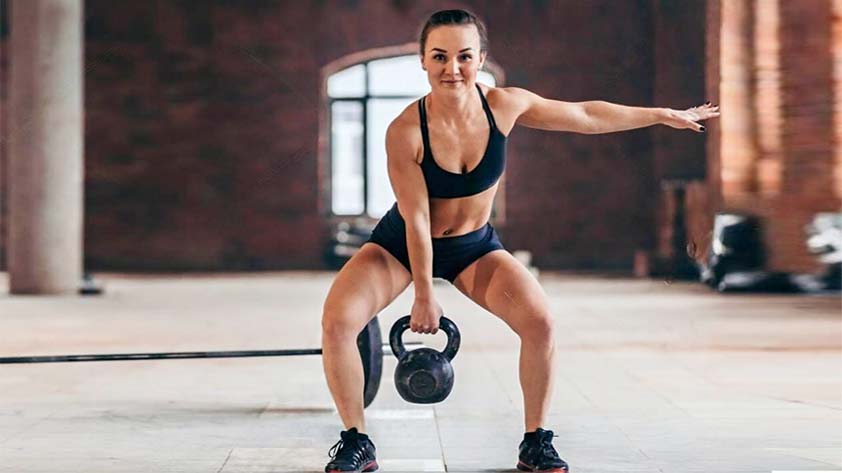
Functional fitness exercises are crucial for maintaining overall physical strength, endurance, and flexibility. These exercises focus on movements that mimic everyday activities and improve the body’s ability to perform tasks efficiently.
Whether you are an athlete, a fitness enthusiast, or simply want to enhance your daily functionality, incorporating functional fitness exercises into your workout routine is highly recommended. Follow on for 3 Effective Functional Fitness Exercises for Optimal Performance!
1. Squats
Squats are a fundamental functional exercise that targets the lower body muscles, including quadriceps, hamstrings, glutes, and calves. This compound movement not only strengthens these muscles but also improves stability and balance. Squats are highly beneficial for activities such as lifting heavy objects, climbing stairs, or getting up from a chair.
To perform squats correctly, follow these steps:
1. Stand with your feet shoulder-width apart and toes slightly pointing outward. This stance helps maintain balance and proper alignment during the exercise.
2. Engage your core and keep your back straight throughout the movement. This ensures that your spine is properly supported and reduces the risk of injury.
3. Slowly lower your body as if you are sitting back into an imaginary chair. Keep your weight on your heels to engage the glutes and hamstrings.
4. Ensure your knees are aligned with your toes, and your thighs are parallel to the ground. This position helps activate the quadriceps effectively.
5. Return to the starting position by pushing through your heels and squeezing your glutes. This upward movement engages the entire lower body.
6. Repeat for the desired number of repetitions, gradually increasing the intensity by adding weights or resistance bands.
2. Deadlifts
Deadlifts are excellent functional exercises that target the back, glutes, hamstrings, and core muscles. This compound movement not only improves strength but also enhances posture and stability. Deadlifts are highly applicable to daily activities such as picking up heavy objects or maintaining proper posture while carrying loads.
To perform deadlifts correctly, follow these steps:
1. Stand with your feet shoulder-width apart, toes pointing forward, and a barbell in front of you. You can also use dumbbells or kettlebells for variations.
2. Bend at the hips and knees, keeping your back straight and core engaged. This initial position ensures proper alignment and activates the muscles in your posterior chain.
3. Grip the barbell with an overhand or mixed grip, hands slightly wider than shoulder-width apart. This grip provides stability and control during the lift.
4. Push through your heels and stand up, while keeping the barbell close to your body. Focus on using your leg and hip muscles to drive the movement.
5. Keep your back straight throughout the movement, avoiding any rounding or arching. This maintains proper spinal alignment and reduces the risk of injury.
6. Lower the barbell back to the ground in a controlled manner, maintaining the same form as during the upward movement.
7. Repeat for the desired number of repetitions, gradually increasing the weight as your strength improves.
3. Push-Ups
Push-ups are fantastic functional exercises that target the chest, shoulders, triceps, and core muscles. They improve upper body strength, stability, and overall functional movement. Push-ups are highly applicable to activities that involve pushing or carrying objects, as well as maintaining a stable upper body during various movements.
To perform push-ups correctly, follow these steps:
1. Start in a high plank position with your hands slightly wider than shoulder-width apart and your body in a straight line from head to toe. This position engages the core and stabilizes the entire body.
2. Engage your core and lower your body by bending your elbows while keeping them close to your sides. This downward movement activates the chest, shoulders, and triceps.
3. Continue lowering until your chest touches the ground or hovers slightly above it. Maintain a controlled and steady pace throughout the movement.
4. Push through your palms and extend your arms to return to the starting position. Focus on using your upper body muscles to generate the upward movement.
5. Keep your body straight throughout the movement, avoiding any sagging or arching. This ensures proper alignment and maximizes the effectiveness of the exercise.
6. Repeat for the desired number of repetitions, gradually increasing the difficulty by elevating your feet or using resistance bands.
Incorporating functional fitness exercises into your workout routine is crucial for enhancing overall strength, stability, and flexibility. The exercises mentioned above, including squats, deadlifts, push-ups, lunges, and planks, target multiple muscle groups and can be modified according to individual fitness levels.
Remember to maintain proper form, warm up before exercising, and gradually increase the intensity and duration of each exercise. By consistently performing these functional exercises, you will notice significant improvements in your everyday functionality and overall fitness level. So, start incorporating them into your routine today and reap the numerous benefits they offer!









